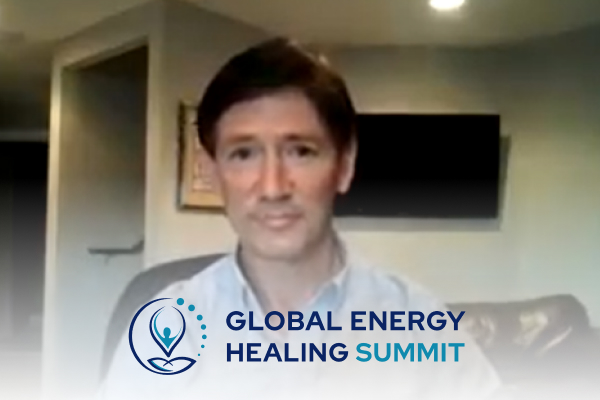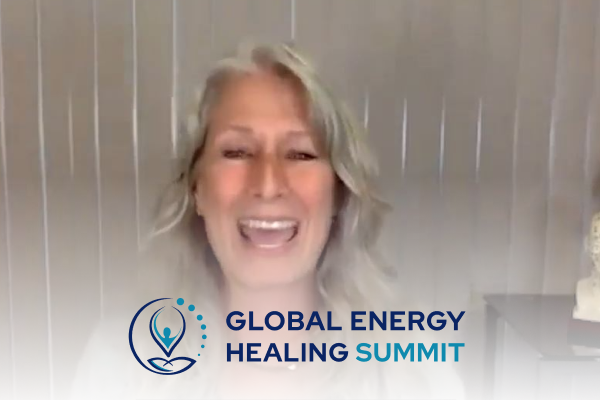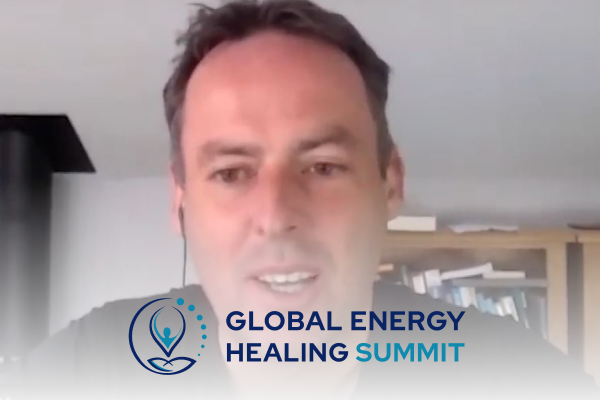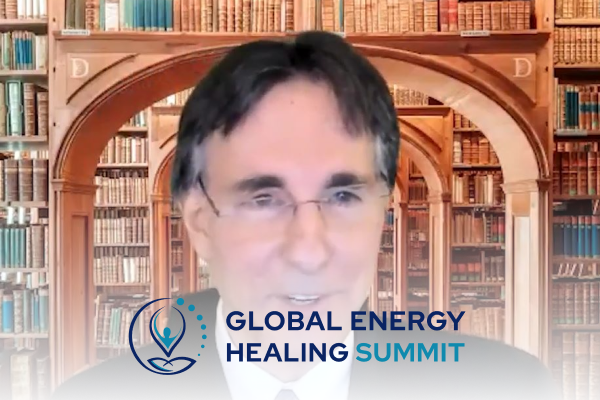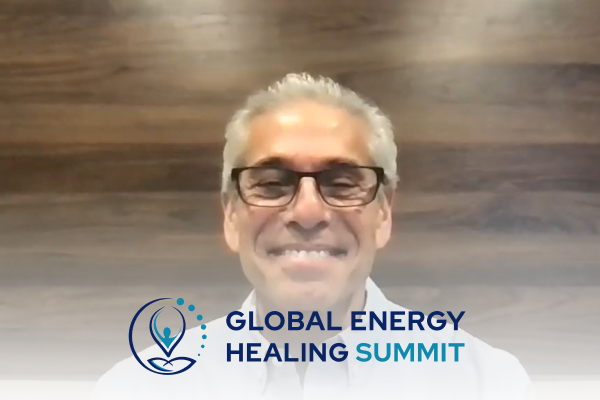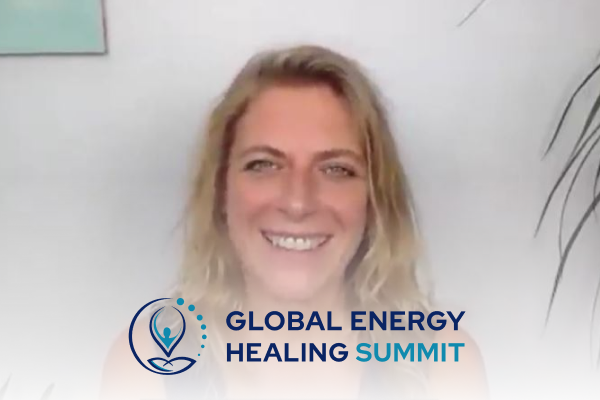Join the discussion below
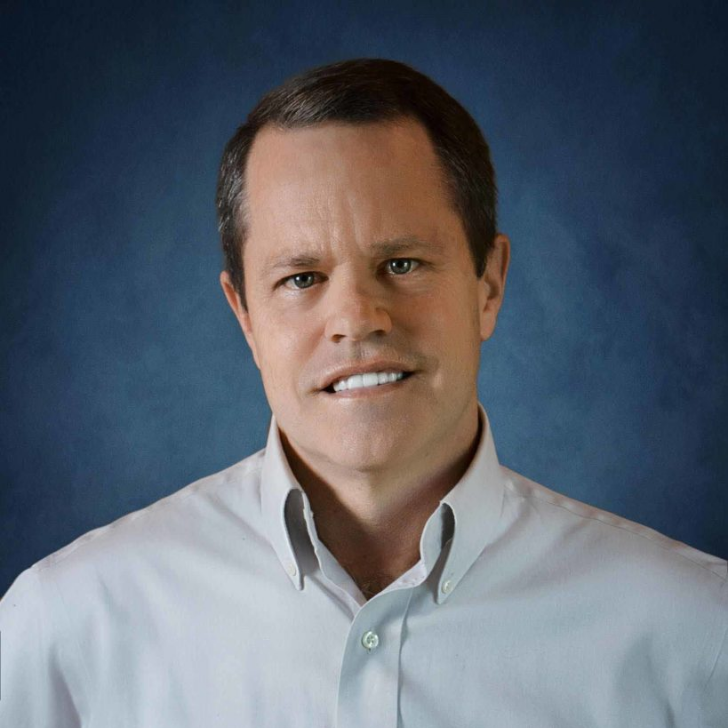
Tom McCarthy is a husband, father, author, speaker, entrepreneur, and investor who has owned businesses in the training, software, financial services, and restaurant industries. Tom’s clients in his training business include some of the worlds leading companies such as Cisco Systems, Microsoft, Salesforce, Wells Fargo, and MetLife. His latest book,... Read More
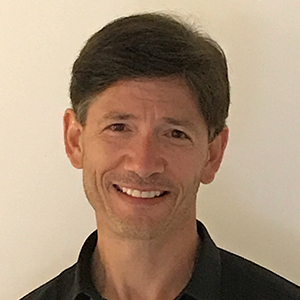
Mr. Tuckey is a board-certified orthopedic specialist (OCS) who graduated magna cum laude from the University of Maryland, School of Physical Therapy in 1990. He is the owner of Tuckey and Associates Physical Therapy LLC, in Frederick Maryland, specializing in the treatment of chronic (failed) cases. Every week patients travel... Read More
- The history and physiological rationale behind Fascial Counterstrain (FCS).
- What makes FCS different from other forms of manipulation.
- The cause of unknown organ, nerve, vascular and musculoskeletal disorders and why FCS can be the cure.
- Examples of conditions that can be alleviated with Fascial Counterstrain.
Related Topics
Aberrant Reflexes, Acupuncture, Anatomy, Arterial System, Chiropractic, Diagnostics, Fascia, Fascial Counterstrain, Fibrocartilage, Flexed Lumbar, Frs Lesion, Health Coaching, Inflammation, Lymphatic System, Manipulation Paradigm, Manual Therapy, Massage, Musculoskeletal System, Neural Nociceptors, Nociceptors, Osteopaths, Osteopathy, Pain, Periosteum, Physiology, Positional Release, Proprioceptors, Reflex Arcs, Restriction, Scar Tissue, Somatic Dysfunction, Surface Tension, Tender Points, Vascular, Vascular System, VisceralTom McCarthy
Our next guest is somebody that I just met recently. And I’m so glad I did. And I met him actually through a mutual friend of his and mine and that’s Tony Robbins. Tony Robbins in his newest book, Life Force, dedicated part of the book to a technology called Counterstrain. And Brian Tuckey is the head of that organization. And really someone who learned it from the originator back in the 1990s, shortly after Brian graduated from graduate school as a physical therapist. He began working with a Dr. Jones who started this technology you’re gonna learn about today. And Brian took it to a whole new level and it really is something fantastic. Fortunately, and I had a tough time squeezing this in, but I was able to experience it just yesterday. And I just got a taste of it, but I gotta tell you man, I can’t wait for the next session. And I know Brian, you were just with Tony Robbins this past weekend, and you had told me you’re going down there. So I texted him and he texted me back saying, you know, just like raving about you and how gifted you are and how powerful this technology of Counterstrain has been for him. So everybody please welcome, and welcome Brian Tuckey. Thank you so much for being part of our summit. We’re really excited to have you here.
Brian Tuckey, PT, OCS, JSCCI
Well, thank you, Tom. Yeah, so I’m glad you got to experience a session. It’s one of these things that, you know, it’s pretty complex, it’s a multi-system paradigm and you start talking about treating the musculoskeletal system and the vascular system and, you know, people, sometimes they just, you know, glaze over because they can’t comprehend how you could actually treat that type of anatomy, so.
Tom McCarthy
Well there’s so many people and a lot of ’em are here on this summit that have been suffering for years and years and years have tried all sorts of different things. This was really unique, you know, I didn’t know what to expect. You know, I didn’t know if it was gonna be like a little bit of massage. If it was gonna be like chiropractic, acupuncture. And it was different than all those things. I think probably the closest, but it’s not really like that, is acupuncture, in that It was really cool that I was went to, I didn’t get the opportunity to go to you, but you sent me to one of your top, top people out here where I live and the diagnostics of, first of all, you know, being able by using my skull to see you what was going on and then starting to dig in. And it was interesting ’cause I was just telling you, I thought, you know, I’m going in, okay. I’d really like to have my legs be a little less tight, get rid of some of the pain in my legs. But my body and that infinite intelligence of our bodies actually presented to Kyle, one of your team members that I went to, that there was other things that needed to be worked on up in my vascular system, in my brain. And it felt good it wasn’t painful. It felt amazing. But take me back to how the heck did you even connect with this. You’re graduating magna cum laude from University of Maryland Physical Therapy. This is not the traditional physical therapy. How did you even move into this?
Brian Tuckey, PT, OCS, JSCCI
So yeah, I would say the way I got started was that, I had to volunteer with some physical therapists to get into PT school. And one of the gentlemen I volunteered with turned out to be an osteopathically trained physical therapist. And you know, he was able to make incredible changes in the body. He used his hands, he knew his anatomy, and I was just astounded by what this guy could do in 20 or 30 minutes. Then I volunteered at some other places and it was put you on a bike, give you a hot pack, you know, electrical stimulation. And you know, nobody seemed to be getting better. So I went back to this guy and I said, Tom, I said, why are you the only one doing the type of PT you’re doing? He said, well, I’m not doing PT, I’m doing osteopathy.
Tom McCarthy
Ah. I said, oh, I said, well, how do you train with them? He says, you know, you can train postgraduate with the osteopaths with your PT degree. So I said, okay, great. I said, you know, if I get into school and I’m gonna come back and then will you point me in the right direction? So as soon as I got out of PT school, you know, Tom was like, study with this guy, study with this guy, and I kinda ran around and I always say, you know, kind of speed dating manual therapy.
Brian Tuckey, PT, OCS, JSCCI
Yeah. Tried a bunch of different techniques. And what I saw was that a lot of the manipulation, you know, you could identify the problem in the body, but the carryover was poor. So, you know, you would, you’d pop it. You know, you’d do a salt tissue technique, stick your elbow in it. And you know, it would loosen, but it would reoccur, you know, 24, 48 hours later, they were back with the same restriction.
Tom McCarthy
Yeah. So I’m listening to this paradigm of scar tissue. And I’m like if a scar tissue, when I did a high velocity manipulation and popped it, how did it grow back in 24 hours? Right. You know, so if scar tissue grows that quickly, we had all wake up every morning, stuck in a ball. So, you know, I went around, I was hearing the same type scar tissue paradigm. And then I ran into Dr. Jones, and he, on the other hand was talking about reflex arcs and about just basically, you know, impaired reflexes, aberrant reflexes. He only had one article to back up what he was doing. And it was a 1975 article called Proprioceptors and Somatic Dysfunction by Irvin Korr. But it basically said irritated pain receptors can cause muscle guard. And he had accidentally, you know, the stories in Tony’s book, but Dr. Jones basically was a chiropractor. You know, he was a osteopath, but did chiropractic type manipulation.
Brian Tuckey, PT, OCS, JSCCI
Yeah. And he was in a small town and, you know, a guy came to him who had what they call psaoasitis, which is a spasm of the psoas and he was stuck flexed. He’d been to two previous chiropractors and had undergone about 12 weeks of high velocity manipulation without success. Dr. Jones was a osteopath and he would always say, you know, I felt my manipulation skills were superior to the chiropractors. So he said, I did two weeks before I realized I was having no effect either. And it was a flexed lumbar too. So the L2 joint was stuck forward bend. So he had isolated the problem that’s where the psoas attaches, but no matter how many times he popped it, it wouldn’t get better. And then the guy comes in and he says, you know, can I, you know, potentially figure out a way to sleep so I can respond to your therapy. There is really no way that I could heal if I can’t sleep. And Dr. Jones said, you know, it makes a lot of sense. So he started experimenting with various positions and ended up rolling him into a ball with his knees off about 60 degrees to one side. And the guy was like, okay, I have no pain right there. So Dr. Jones, like, you know, propped him up with a bunch of pillows and then went to treat his next patient, came back 20 minutes later to see if the guy maintained the position of comfort. And he was like, “Hey, you know, it feels great.” He’s like, “Okay, well, I figured you probably memorized this by now. So let’s get you up.” and, you know, takes the pillows out. And the guy stood up perfectly straight for the first time in three months. And they’re both looking at each other and Dr. Jones was like, he’s like, can you backward bend? And he went into almost full backward bend with no pain. So he was like, the patient was like, you know, “What happened?” He’s like, “I have no idea.” So he came back two days later, or three days later, and he walked in upright and Dr. Jones went and assessed that, you know, it’s called an FRS, flex rotated side bend lesion at L2, it was gone.
Tom McCarthy
Wow.
Brian Tuckey, PT, OCS, JSCCI
The psoas spasm was gone.
Tom McCarthy
Yeah.
Brian Tuckey, PT, OCS, JSCCI
And he realized that all the tenderness in that area had also gone away. So he said, somehow this position of comfort fixed, what no manipulation could.
Tom McCarthy
Yeah.
Brian Tuckey, PT, OCS, JSCCI
With no trauma.
Tom McCarthy
Okay?
Brian Tuckey, PT, OCS, JSCCI
Yeah. So that’s how some people to this day call Counterstrain, positional release. Okay, so he had just one concept, positions can fix somatic dysfunction and there’s a surface tension and/or restriction that could be a marker of it. And that’s how we started looking for it, finding positions to calm the tissue. And that’s how it started.
Tom McCarthy
Yeah.
Brian Tuckey, PT, OCS, JSCCI
And yeah. So go ahead.
Tom McCarthy
Well then he had what, 220 points, sore points, or points that he would do, now you’ve expanded it to how many.
Brian Tuckey, PT, OCS, JSCCI
It’s about 1,200.
Tom McCarthy
1,200, yeah.
Brian Tuckey, PT, OCS, JSCCI
So I was one of the few people as, you know, a young buck, a student and Dr. Jones eventually made me one of his instructors in 1997.
Tom McCarthy
Right.
Brian Tuckey, PT, OCS, JSCCI
That was really into the physiology. And, you know, I’m the guy who always ask, well, what are we doing? You know
Tom McCarthy
Yeah.
Brian Tuckey, PT, OCS, JSCCI
How does this work? And to be honest, a lot of the practitioners were like, you know, we can do it. Why do we care? And I’m like, if we can’t figure out the physiology behind this, we can’t progress it. And we can’t explain it. So I’ve always just delved into the, you know, tissue science and the pain science, and just constantly worked in the clinic and tried to put the two together. And what I realized were that these tender points were not just manifestations of the musculoskeletal system. They were related to the body’s deep fascia and all tissues. Okay, so the pain receptors, which is the key here, are chemically stimulated by inflammation, but they’re in all tissues. They’re not just in the musculoskeletal tissues. There are, you know, visceral nociceptors, vascular nociceptors, neural nociceptors, periosteum has ’em of the bone. Fibrocartilage has them. So these tender points were related to specific anatomical structures. And I went back and started figuring out, okay, this tender point is that structure, that tender point is this structure.
Tom McCarthy
Right.
Brian Tuckey, PT, OCS, JSCCI
And I realized they weren’t musculoskeletal, half of them.
Tom McCarthy
Yeah.
Brian Tuckey, PT, OCS, JSCCI
And that just blew it up. So then I mapped out all the lymphatic system, all the arterial system, everything.
Tom McCarthy
Yeah.
Brian Tuckey, PT, OCS, JSCCI
Yeah.
Tom McCarthy
That’s amazing, well, and it’s almost like an art form. Like I, yesterday when I was having the treatment, you know, a lot of the time Kyle, who you trained and you recommended to me, he was, you know, touching points on my head and could tell from points on my head, what was going on in my body and what needed to be manipulated.
Brian Tuckey, PT, OCS, JSCCI
And it was right on, yeah.
Tom McCarthy
But it was almost like an art form, it was like, you know, it was all around there. It was like, wow, that was really profound. And you figured that out, you literally have a methodology where you called a scan, but it’s a scan done with the head where you can pinpoint exactly what type of manipulations or Counterstrain techniques need to be done, which I thought that was mind blowing.
Brian Tuckey, PT, OCS, JSCCI
So that is something it’s a little ahead of the research. And I’ll talk a little bit about what a tender point is. And I recently published an article on this in a major pain journal, but so the cranial scan, I call it, it is a cranial bone motion test. And what happens is that the dura, which is the fascia that envelopes the brain, spinal cord and blends into all the nerves, is also attached to the inner surface of the cranium and the inflammation in the various areas where the nerves go in the body, you know, travel up, secondary hyperalgesia it’s called. And the tension travels all the way up to the cranium.
Tom McCarthy
Yeah.
Brian Tuckey, PT, OCS, JSCCI
And I accidentally discovered that specific bones relate to specific systems of dysfunction. So for example, the mastoid process here, this bone behind your ear, that’s tender intense. That’s the visceral fascia.
Tom McCarthy
Right. I learned that yesterday too.
Brian Tuckey, PT, OCS, JSCCI
Right and I said, then I realized that it not only tells you system, but depending on where on that bone, you can zero it in almost to one point.
Tom McCarthy
Nice.
Brian Tuckey, PT, OCS, JSCCI
So we’re able to take someone like yourself and you come in and we can quickly say, oh, you have dysfunction of your lymphatic system in your right leg. Then we go and check just for those points. And it’s very, it’s very precise, it’s very fast.
Tom McCarthy
Yeah.
Brian Tuckey, PT, OCS, JSCCI
And it allows us to navigate through, again, a thousand plus tender points in real time. And you can treat someone pretty rapidly. Again, it, you know, some people say, wow, that’s kinda like voodoo. It’s not, it’s science. It’s just at this point relatively poorly understood science.
Tom McCarthy
Well, but also it is a little bit almost, I don’t know, call it divine intelligence, but you know, the body has this incredible intelligence that you can tap into.
Brian Tuckey, PT, OCS, JSCCI
Yes.
Tom McCarthy
And you discovered it interesting, like you told me, You told us Dr. Jones’ story about how he didn’t even really know what he was doing. And then whoa, he’s guy stood up, and then your discovery, you said was by accident. Where you figured that out. Like how did that accident happen?
Brian Tuckey, PT, OCS, JSCCI
Yeah, so the first system that I mapped out besides the musculoskeletal structures, and at the time of Jones, we thought it was all muscle tissue and maybe some ligaments. Was actually the visceral or organ fascia. So I found a whole series of points that I literally had to manipulate the organ connective tissues, like the triangular ligaments of the liver, or the ileocecal, you know, attachments of the cecum to the pelvis. And then there were so many of them that I’m like, wow, this is becoming time consuming. And there was no cranial scan. So I’d have to check all of Dr. Jones’ points and then check all of my new visceral points and I needed to speed up.
Tom McCarthy
Yeah.
Brian Tuckey, PT, OCS, JSCCI
So I said, I wonder if I go up and I work on the cranial area of the jugular foramen, where the vagus nerve comes out.
Tom McCarthy
Okay.
Brian Tuckey, PT, OCS, JSCCI
I wonder if I can, you know, open up that space and clear a lot of the visceral stuff, maybe it will work. It didn’t work. But I realized that that area of rigidity was there and it was sensitive right where that jugular foramen is when there was visceral dysfunction. So I was able to just check that bone real quickly. And the person’s like, ah, you know, it’s tight. Ah, I would check my points and I’m like, okay, okay, cool. Now I have a quick way of knowing whether that whole group of tender points, I don’t have to look for em. And then once I realized that it was system specific, you know, I just extrapolated, oh, let me see if the ones that I know are vessels. If they’re projecting to an area and it be, it’s true, it’s a hundred percent true. So it’s all really embryology and referred, you know, pain intention, but it’s totally a must have because you need some form of diagnostic if you’re gonna wade through all systems.
Tom McCarthy
Right, yeah, especially like you said, with that many checkpoints, trying to go through 1,100 to see what’s working, what’s not.
Brian Tuckey, PT, OCS, JSCCI
Yeah.
Tom McCarthy
But this ability to really zone in and know precisely where to go, which is what I experienced yesterday. It really was mind blowing. So take us through someone who’s got chronic pain or chronic illness. First of all, what types of things can be treated with the Counterstrain methodology? What types of things, and I know on your website, there’s a long list, but which actually is really cool. There’s so many things it can impact, but what are some of the main things that you are treating?
Brian Tuckey, PT, OCS, JSCCI
So I would say that the first indication and what the article talked about was really chronic pain. And the thing about chronic pain though, is that it is a multi tissue, multisystem paradigm.
Tom McCarthy
Yeah.
Brian Tuckey, PT, OCS, JSCCI
So many people look at like the word myofascial pain. Well, what is that? It’s muscle fascia.
Tom McCarthy
What is fascia, talk about what fascia is. People might not know that, yeah.
Brian Tuckey, PT, OCS, JSCCI
Okay, so fascia is the connective tissue that envelopes and makes up virtually everything in our body, ligaments are made of fascia, tendons are made of fascia, the external, you know, surface of all vessels, like the tunica adventitia is all fascia, the pericardium, the pleura of the lungs. I mean, everything is really fascia. It’s connective tissue. And what we know about fascia is it is a proprioceptive and sensory organ. Back when I went to school, it was pretty much inert. It just holds us together. But no, number one is contractile. It has myofibroblasts in it, so it’s actually contractile. It has all the pain receptors in it. And it has the, you know, your sensory. So it is a proprioceptive organ that can be stimulated by trauma or inflammation to create chronic pain.
Tom McCarthy
Yeah.
Brian Tuckey, PT, OCS, JSCCI
So the real thing is when you say my lower back hurts, the question is which group of nociceptors, pain receptors are being stimulated.
Tom McCarthy
Yeah.
Brian Tuckey, PT, OCS, JSCCI
Is it the muscles? Is it tendons? The ligaments, the wall of the disc? You follow me? It could be organ stuff projecting. Yes is the answer.
Tom McCarthy
Yeah.
Brian Tuckey, PT, OCS, JSCCI
So this system allows us to find that area of inflammation through the scan, through the tender points, precisely where that inflammation is. Now here’s where the key where Counterstrain is different from other forms of manipulation, it’s an indirect not direct. And what that means is you decompress in silence, the area of pain, you unload it.
Tom McCarthy
Yeah.
Brian Tuckey, PT, OCS, JSCCI
Then that decompression drains out the inflammation and breaks the cycle.
Tom McCarthy
Wow.
Brian Tuckey, PT, OCS, JSCCI
It is painless.
Tom McCarthy
Yeah.
Brian Tuckey, PT, OCS, JSCCI
Okay? And you can do it even with people who are fragile like infants or people with osteoporosis, ’cause you don’t engage barriers.
Tom McCarthy
Right.
Brian Tuckey, PT, OCS, JSCCI
The other thing is, since it gets to the root of the problem, which is trapped inflammation the carryover is really, really good. You don’t retreat things. So if we release a tender point today, we don’t have to do it next Wednesday. Just the next layer.
Tom McCarthy
Yeah, so the treatment tends to hold through time.
Brian Tuckey, PT, OCS, JSCCI
Yes, so the individual points, you know, do not need to be retreated again, you know, now you need to have a nice background of training to be able to really make a difference and know more than like 10 of ’em.
Tom McCarthy
Right.
Brian Tuckey, PT, OCS, JSCCI
But you don’t retreat them. Now the other cool thing is that, and why you see that the scope is so broad,
Tom McCarthy
Right?
Brian Tuckey, PT, OCS, JSCCI
Is that when inflammation stimulates a pain receptor, it triggers reflex arcs in the spinal cord that create muscle guarding reflexes.
Tom McCarthy
Right.
Brian Tuckey, PT, OCS, JSCCI
Well, some are just like, you know, my trapezius locks up and guards my nerve, but some of those reflexes are smooth muscle, which are called a somato-sympathetic reflexes, which is the sympathetic nervous system, which mean the vessels spasm. So that gives you poor healing. That gives you degenerative changes, that gives you edema. It can give you migraine headaches. It can give you a swollen ankle. So when we break this reflex arc, the muscles relax, the pain drops, but the vessels open up, it restores perfusion. So that’s where you see like brain fog and all these organ things can change. And it’s from somato-sympathetic reflexes that reset when you drain the inflammation.
Tom McCarthy
Yeah, no, I love it. Well, and on your website, which is counterstrain.com, is that correct?
Brian Tuckey, PT, OCS, JSCCI
Yeah, so if you want the educational website that is specific to fascial Counterstrain, the modern version is counterstrain.com.
Tom McCarthy
Yeah.
Brian Tuckey, PT, OCS, JSCCI
And you know, again, maybe for your viewers, we could throw up something later, the group that trains, that teaches it is Jones Institute, jicounterstrain.com and Kyle, who you met works at that place.
Tom McCarthy
Okay, good. Yeah.
Brian Tuckey, PT, OCS, JSCCI
Yeah, so we got a group that just basically about the technique and educational and then the, how you train, if you wanna learn how to do it.
Tom McCarthy
Yeah. And then with counterstrain.com, there’s a ton of information on that site, ’cause before I went, I actually read that, and I saw all the different health issues that you treat and it was mind bogging. Like, you know, I was thinking it was just muscular, but as you mentioned, there’s so many other parts of our body like organs and even tinnitus, you treat brain fog, anxiety, all these different things through this, really, I mean, it was not painful. I was, you know, lying down, there was, and even the manipulations where there was like a little pain point, it felt good when he was like stretching it, it felt like ah, yeah, but it wasn’t like, you know, someone digging in and making it hurt, which was mind blowing. That’s why Tony loves it so much. I’m sure it feels good when you’re working on him.
Brian Tuckey, PT, OCS, JSCCI
Yeah. So, you know, again, the position of comfort, which Dr. Jones originally discovered that is the direction. So let’s say somebody has a whiplash and they come in with their neck flexed and what they can’t do is extend. Okay?
Tom McCarthy
Yeah.
Brian Tuckey, PT, OCS, JSCCI
Typically you would like, oh, let’s go, let’s go. And you extend them into the barrier. Counterstrain we slackin’ them more, drain the inflammation out to free it up. So we go in the direction of comfort. We don’t go in the direction of pain.
Tom McCarthy
Yeah, so what are things that, ’cause a lot of people that are listening to you right now, Brian, you know, they’ve heard other methodologies, they’ve tried it, they’ve had big hopes and it didn’t help, or maybe helped a little bit, but didn’t stick. What are some things that, where you’ve seen responses to Counterstrain that people have tried lots of other manipulations, physical therapy, what are some things that, you know, that people could potentially have that could be helped by what you do?
Brian Tuckey, PT, OCS, JSCCI
Yeah, actually my entire caseload is that group. Okay? So.
Tom McCarthy
That’s why I saw that. That’s right. You take all the toughest cases that haven’t responded. That’s what you do, people flying from all over to see you, right?
Brian Tuckey, PT, OCS, JSCCI
Yes, yes. So in my patients today, I think I treated two people from Maryland today. Everyone else was from outta state. So, you know, everyone who comes has had other treatments previously, okay.
Tom McCarthy
Yeah.
Brian Tuckey, PT, OCS, JSCCI
So just using a case that I saw this week and something that any medical people here, it’ll blow their mind, that you can treat this. I have a girl that is post polio. And so I treated her when she would, she is from the Congo, she’s adopted.
Tom McCarthy
Yeah.
Brian Tuckey, PT, OCS, JSCCI
And she had club foot repairs at Hopkins. And when I met her, her entire leg was in a hypertonic state and rotated virtually backwards on one side.
Tom McCarthy
Wow.
Brian Tuckey, PT, OCS, JSCCI
She’d been fully through rehab. And they had basic given up and I worked on her and got that leg back, but it became flaccid, you know, it went from a spasm just to flacid where it wasn’t really functional, but it was just, you know, aligned better. So anyway, I recently mapped out a lot of the deep drainage pathways of the spinal cord. So, you know, into what’s called, you know, glial cell neuro inflammation and it works on which.
Tom McCarthy
Which we all know what that is, right?
Brian Tuckey, PT, OCS, JSCCI
Yeah, so basically it’s inflammation in the central nervous system, okay.
Tom McCarthy
Ah.
Brian Tuckey, PT, OCS, JSCCI
So it’s basically working on not the lower motor neuron, but the upper motor neuron, which gives you like stroke spasticity. So Della’s her name, Della’s mom was in for seeing one of my colleagues for headaches or something. And I saw Della go by, so I yelled to the mom, I said, Sarah, let me take a quick look at Della. And I did bite scan for this new area and it was bad. I said I’m gonna try this on Della, her post polio syndrome.
Tom McCarthy
Yeah.
Brian Tuckey, PT, OCS, JSCCI
Anyway, I did the work on her and this was about three or four weeks ago when she left her foot had lined up the rest of the way, it was about this far short, it lined up. Two weeks later, she came in with her to see Chris. She brought her in, she had sensation back, even light touch. She had no feeling before. And she had a heel strike. Her ankle woke up. She could now move her ankle and get a heel strike.
Tom McCarthy
Wow.
Brian Tuckey, PT, OCS, JSCCI
So that’s post polio syndrome, you know, where basically that’s, you know, perceived to be a permanent damage, but it wasn’t.
Tom McCarthy
Absolutely, yeah.
Brian Tuckey, PT, OCS, JSCCI
Yeah, so now she has a heel strike. Now she has sensations she’s even ticklish on her foot and she’s been like that for 13 years. And just one session of draining that area of the spinal cord made that kinda change in a case that, you know, basically is considered untreatable.
Tom McCarthy
Yeah, that’s amazing. So what you did was you really allowed the body to heal itself by taking away the things that were preventing it from healing, which is really cool.
Brian Tuckey, PT, OCS, JSCCI
Right, and the other thing I would make a point is, again, you know, this is science, it’s an anatomical paradigm. You know, all the proprioceptors, all the research. Again, if anyone’s interested in looking at the article, Tony’s book.
Tom McCarthy
Yeah.
Brian Tuckey, PT, OCS, JSCCI
Life Force on Counterstrain has a link to it. And it’s basically impaired lymphatic drainage and interstitial inflammatory stasis, blah, blah, blah, blah. But you can read that. So this is all science. It’s 2021 citation, major pain journal, 154 citations. Okay, so it’s real stuff. But anyway, it’s an anatomical model, so when you come in, if you say I got something going on with my kidney, we can say, we can check the renal vein, the renal artery. We can check the renal fascia. We can check the sympathetics at the T12 level, the celiac plexus. We can check all the nerves and structures of blood flow in and outta the kidney.
Tom McCarthy
Wow.
Brian Tuckey, PT, OCS, JSCCI
To see what the impairment is and their diagnostic point for these.
Tom McCarthy
Yeah.
Brian Tuckey, PT, OCS, JSCCI
And then we can basically restore the blood flow and see how you do.
Tom McCarthy
Nice.
Brian Tuckey, PT, OCS, JSCCI
So if you’ve got eyes, we check the points for the eye. It’s an anatomical paradigm. So it’s not like, well, let’s just stick some needles in and see if it works ’cause that’s not an anatomical paradigm.
Tom McCarthy
Right.
Brian Tuckey, PT, OCS, JSCCI
It’s a Western paradigm.
Tom McCarthy
Yeah.
Brian Tuckey, PT, OCS, JSCCI
Yeah.
Tom McCarthy
Well, it’s so cool. So you’ve been doing this for how many years now?
Brian Tuckey, PT, OCS, JSCCI
32.
Tom McCarthy
Yeah, and you still have the passion of like a young guy.
Brian Tuckey, PT, OCS, JSCCI
I love it. Yeah, I love it.
Tom McCarthy
Like you just starting out. Now your big job is you gotta continue spreading it so more and more people can be treated. How are you gonna do that? How are you doing that? How are you getting more and more people trained? ‘Cause it, I mean, just yesterday and again, whenever you look at somebody who’s really good at something, like you, or Kyle, the person you train, you’re like, wow, that must be pretty challenging to know all those points. How do you train people so that this can be available to more people who really need what you’re doing?
Brian Tuckey, PT, OCS, JSCCI
Yes, yeah, so first of all, the reason that I only take failed difficult cases is because I really only practice because I’m trying to push the envelope on the learning process for myself.
Tom McCarthy
Nice.
Brian Tuckey, PT, OCS, JSCCI
And what I’ve never done, you know, for all the years I’ve taught, you know, ’cause I started teaching with Dr. Jones in ’93. I assisted him for the first time.
Tom McCarthy
Yeah.
Brian Tuckey, PT, OCS, JSCCI
Is I’ve always burned it at both ends, you know, I’ve practiced full time and I do my teaching and developing on the side.
Tom McCarthy
Yeah.
Brian Tuckey, PT, OCS, JSCCI
And it’s never stopped, you know, I’ve gone all the way from, you know, one system to multisystems to the central nervous system and into the brain.
Tom McCarthy
Yeah.
Brian Tuckey, PT, OCS, JSCCI
Because I’m pushing the envelope and, you know, constantly reading and learning anatomy. So it ends up being like a 12 course curriculum. If you wanna take it all the way in to like post concussion syndrome and, and you know.
Tom McCarthy
Right.
Brian Tuckey, PT, OCS, JSCCI
Traumatic brain injury. But in a few classes you can treat the basic stuff. You know, you could treat, you know, a neck pain, back pain, plantar fasciitis, tennis elbow in a handful of classes, so.
Tom McCarthy
I like how you act like those are nothing, you can treat neck pain, plantar fasciitis, stuff that people are suffering with. You’re like, yeah, that’s like small stuff.
Brian Tuckey, PT, OCS, JSCCI
It’s musculoskeletal, it’s the low hanging fruit a lot of times. But we have a course called foundations of fascial chemistry foundations and that’s on the jicounterstrain.com, Jones Institute. And that’s the first class I go into. It’s basically, you know, videos of like live treatments, before and afters. And then we go into the physiology and then we teach the basics of the cranial scan.
Tom McCarthy
Yeah. And then we give everyone about 10 releases in five different systems, five arterial releases, five organ fascia releases, five musculoskeletal releases. So you can see how it works. You know, you can check the scan, treat it and come back.
Brian Tuckey, PT, OCS, JSCCI
Yeah. So people just learn the anatomy and then they say, okay, now I’m ready. And then based on, you know, what you wanna treat, let’s say, Hey, I’m a sports medicine guy.
Tom McCarthy
Right.
Brian Tuckey, PT, OCS, JSCCI
We’d make recommendations as to what classes you would take.
Tom McCarthy
Okay.
Brian Tuckey, PT, OCS, JSCCI
If you’re like, Hey, I work with strokes. Okay, well you need to get into the nervous system and get some of the spinal cord stuff. So we kinda recommend where you would go from there.
Tom McCarthy
So you can even help people that have had strokes, regain potentially some mobility, and.
Brian Tuckey, PT, OCS, JSCCI
Yeah, so I, you know, that’s what we would call pathology. Okay, because there was some damage, but a lot, if anyone out there is on the feet, knows anything, let’s say like traumatic brain injury, okay.
Tom McCarthy
Yeah.
Brian Tuckey, PT, OCS, JSCCI
You can have some initial damage, but then there’s this secondary inflammatory effects.
Tom McCarthy
Right.
Brian Tuckey, PT, OCS, JSCCI
That can be way worse.
Tom McCarthy
Yeah.
Brian Tuckey, PT, OCS, JSCCI
A lot of the secondary stuff can be fixed. The stuff that occurs later.
Tom McCarthy
Yeah.
Brian Tuckey, PT, OCS, JSCCI
So a stroke, you have some recovery, while we can get all the inflammation out, restore blood supply, maximize that person’s recovery, which could be all the way back to perfect. But in a major, major, you know, brain death area, no.
Tom McCarthy
Yeah.
Brian Tuckey, PT, OCS, JSCCI
But the point is, you know, until you go through and restore the anatomy, like you said, restore the body’s ability to bring blood back in and heal, you have no idea where you could be. And, a lot of, like look at like CTE, chronic traumatic encephalopathy.
Tom McCarthy
Yeah, yeah, yeah.
Brian Tuckey, PT, OCS, JSCCI
So these are the football guys. Okay?
Tom McCarthy
Right.
Brian Tuckey, PT, OCS, JSCCI
So look at the paradigm just real quick in that. These guys had multiple concussions in their career, okay? Now, if you think about it, what it is, it creates inflammation, which then creates the vessel spasm. Well, they start having more and more pressure built up ’cause the veins aren’t draining and whats called the lymphatic system. Concussions are easier now, there’s more pressure in the head. Now you have more and more vasospasm. They retire, 20 years go by and no one restored the blood flow. So which you get premature degeneration of the brain. But if we can get in there and open up those reflex arcs and drain that pressure out and restore the blood supply, you don’t get that, you see?
Tom McCarthy
Yeah. Yeah.
Brian Tuckey, PT, OCS, JSCCI
So I can stop cold post concussion syndrome and turn ’em back into that old person. But if you bring me somebody who hasn’t had blood supply to their brain for 30, 40 years and that brain tissue has changed, I can’t bring ’em back to who they were. Yeah, so you gotta catch it at the right time.
Tom McCarthy
That’s fascinating. And a lot of chronic pain, like people think it’s still the injury that they had, but the injury’s probably healed in many-
Brian Tuckey, PT, OCS, JSCCI
Correct, correct.
Tom McCarthy
Issues of chronic pain, but it’s just that inflammation of those pain receptors, I think you said they are overstimulated.
Brian Tuckey, PT, OCS, JSCCI
Yes.
Tom McCarthy
And there’s no need for that, like, you know, you don’t have to live with that pain anymore that so many people are living with or, you know, drugging themselves to get rid of, you go right down to the core and drain it, release it and then whoa, no more pain.
Brian Tuckey, PT, OCS, JSCCI
Well, what the entire article was about and the reason it’s actually the most viewed article in musculoskeletal pain or frontiers all time. Because people who work in chronic pain, they look at this paradigm. They’re like, okay, this makes sense. And what happens is, you know, cytokines, which you’ve heard about cytokines from COVID. So it’s inflammation. So when inflammation is produced, if a lot of it’s in one area, another cytokine, it’s called TGF beta 1, is produced by various cells. It turns out to make fascia contract. So what happens is the inflammation can create contraction and block its own drainage. Now that chemical irritant to those pain receptors is trapped in there.
Tom McCarthy
Stuck, yeah.
Brian Tuckey, PT, OCS, JSCCI
Stuck, right. So this technique identifies where that’s trapped in any tissue at any depth and we decompress it and we drain it out and it breaks the cycle.
Tom McCarthy
Yeah.
Brian Tuckey, PT, OCS, JSCCI
So you’re right, the healing has occurred, but that protective reflex arc and that trapped inflammation has to come out for it all go back to baseline, to reboot the computer.
Tom McCarthy
Whole different way of thinking about pain. Really, really cool. So you talked about how you’re training people.
Brian Tuckey, PT, OCS, JSCCI
Yes.
Tom McCarthy
To be able to go treat. And I know a lot of people that are on this summit are health professionals. This could be something they can add to what they do. How does somebody that is not a health professional, get this work done on them? How can they find somebody to do this work on them?
Brian Tuckey, PT, OCS, JSCCI
Yeah, so going back to, again, it’s jicounterstrain.com, Jones Institute, JI for training.
Tom McCarthy
Yeah.
Brian Tuckey, PT, OCS, JSCCI
But if you wanna go, if you go to counterstrain.com, then there’s a search for practitioner in your area, and it is by person with most training first in each area.
Tom McCarthy
Yeah.
Brian Tuckey, PT, OCS, JSCCI
Like, so like if you search in Maryland, you know, you’ll get me.
Tom McCarthy
But you only take the toughest cases, so you better be in a a lot of pain if you go to Brian. Yeah. Yeah.
Brian Tuckey, PT, OCS, JSCCI
So you can see one of my colleagues, but so whoever’s taken the most classes is listed first and you have to take four classes to even get on that website. So, you know, you find somebody at least with some training. Now the way we work as a group and there aren’t, there are not enough of us right now. There just are not.
Tom McCarthy
How many are there? Are they around the world or just in the US? How many?
Brian Tuckey, PT, OCS, JSCCI
I’ve got probably 2,000 extremely active, worldwide people training.
Tom McCarthy
Okay.
Brian Tuckey, PT, OCS, JSCCI
Mainly in United States, Australia and France. I’ve said no to other opportunities, because I’m trying to get those groups where I want ’em and then we’ll talk about it, but really that’s where you can train. And the way we do it though, is let’s say you came in with some low hanging fruit stuff. You know, my neck hurts, my elbow hurts, but you’ve also had a mild, traumatic brain injury. You know, the local person could say, okay, let me work on your neck and your arm and I’m gonna take you until I just don’t know anymore. And then we kinda triage, we say, go see Kyle, go see Brian and finish up if you want more. And we just send them off to the person that we know can do that next level.
Tom McCarthy
Okay, okay, very cool, yeah.
Brian Tuckey, PT, OCS, JSCCI
So we try and just take care of people, you know, just get ’em to who they need and the whole paradigm is, you know, fix people. And if you can’t fix, ’em move ’em on. We know we don’t treat people ongoing. We try and make it reasonable as far as price, but it’s a one on one technique, you know, it’s very time, you know, intensive.
Tom McCarthy
Yeah. It was an hour yesterday what I experienced and it was, I mean, it was very relaxing, but when I got home, I was like tired, like, ’cause my body I guess, had been working right. Or draining or whatever was going on. I was like, man, why I was so tired? I just laid down and he did some nice little manipulations, but.
Brian Tuckey, PT, OCS, JSCCI
You felt, you felt exhausted, yeah.
Tom McCarthy
Just the processing, I guess, that my nervous system had to do, to integrate all of it was just like, all right, go rest, relax, and.
Brian Tuckey, PT, OCS, JSCCI
So, what it is is the, I talked about the sympathetic activation and there’s sympathetic elevated tone reflexively, with each tender point, that’s what maintains it. So as he worked on you, it lowered your sympathetic drive, which raises parasympathetic.
Tom McCarthy
Yeah.
Brian Tuckey, PT, OCS, JSCCI
Well guess what that is, that’s rest.
Tom McCarthy
Yeah.
Brian Tuckey, PT, OCS, JSCCI
It’s rest and digest. And also the other system that works with parasympathetic is your lymphatic system. So your lymphatics kicked in and they’re like, okay, I gotta get this crap outta here and it shuts you down. People are like, man, I just wanna take a nap. That’s where it is.
Tom McCarthy
Yeah. That’s why I felt, I really, I fell asleep very easily last night as I was worn out. But yeah, it was really, really fascinating. I hope everyone will check it out and Counterstrain.com or J, J.
Brian Tuckey, PT, OCS, JSCCI
jicounterstrain.com.
Tom McCarthy
counterstrain.com. So if you want to learn how to do this, that’s the jiCounterstrain.com. And if you need help or you just wanna find out more about it or what conditions can be treated, go to countertrain.com. I think it’s just an unbelievable resource. I know Tony says it’s one of the top three things he’s ever experienced and I’m new at it, but I would probably have to agree after the first time. And I’ve already got three more sessions booked. So with Kyle.
Brian Tuckey, PT, OCS, JSCCI
Yeah, yeah, Tony, you know, the other things that he really uses a lot are also very expensive things like stem cell. I mean, so, you know, he always talks about this. He’s like, you know, this is something that anybody can get. You don’t have to have a lot of money. You know, it’s really something that hopefully we get more practitioners and we get it out there, because, you know, talk about facilitating healing in some severe cases like post COVID syndrome, you know, all this chronic lung, we work with these people and they do really well. There just aren’t enough of us. So like I said, my goal being on here today is really to, you know, hopefully we get some more people and we can really get this out and in a cost effective way, really help a lot of people.
Tom McCarthy
Who are potential therapists that could either add this to their practice, like chiropractors potentially could add a massage therapist. I mean, what type of people really do the physical therapist obviously?
Brian Tuckey, PT, OCS, JSCCI
Yeah, that’s a great question. So I would say the, you know, the wheelhouse would be someone like a physical therapist, occupational therapist, but we do have naturopathic doctors who train, ’cause they use it with their naturopathic medicine.
Tom McCarthy
Yeah.
Brian Tuckey, PT, OCS, JSCCI
And
Tom McCarthy
Yeah.
Brian Tuckey, PT, OCS, JSCCI
I just, this year presented to the osteopathic chairpersons meeting of all the chairpersons in the country and they had not really seen it since Dr. Jones is dead.
Tom McCarthy
Ah.
Brian Tuckey, PT, OCS, JSCCI
Because when he passed away, they’re like, well, okay, he’s dead. You know, we’re not paying attention.
Tom McCarthy
Yeah.
Brian Tuckey, PT, OCS, JSCCI
And they just finally gave me a chance and, you know, they’re all signed up, you know, they were blown away by it. But anyway, so osteopaths, the only thing I would say that is different about this is you do have to have a license to touch. So massage therapists and there are, you know, Tim Hodges who runs counterstrain.com with me. One of the best Counterstrainers in the world is a massage therapist, but it’s an anatomical model. So if you’re a massage therapist and you’re like, you know what, I really wanna understand pain. I wanna know what’s really going on in the body. I wanna do more than just massage people.
Tom McCarthy
Yeah.
Brian Tuckey, PT, OCS, JSCCI
Then yes. But if you’re somebody who doesn’t wanna get into the science, I would say, no, it’s not for you.
Tom McCarthy
Right, and it’s interesting, like, you know, like you said, I’ve had massages or even physical therapy, you know, I’ve had, ’em where there’s a tight place in the body and they would go in and loosen it up. I felt that the pain goes away. And then next day it’s like there, this, first of all, it’s not that intense, ah, you know, pain that you’re feeling while they’re loosening it up. And it, when it loosens, it doesn’t have to tighten back up, because everything that was making it tight now is drained away, which is really a cool philosophy. I’m so glad that the happy accidents of Dr. Jones and you happened because so many people are benefiting. And it’s just a shame that unfortunately, so many people don’t know about this right now. And so they potentially will live the rest of their life or a good portion of their life in chronic pain. That just doesn’t have to be. But thank you so much for your gift and bringing this to the world. Any final words for everybody that’s watching this today?
Brian Tuckey, PT, OCS, JSCCI
Yeah, I mean, I would just say that the reason it’s really not gotten out right yet is to be honest, somewhat intentional, because of the lack of practitioners. Everyone who does this at a high level is pretty overwhelmed with business. So years ago, Tony said to me, you know, when he first experienced it, he said, Hey, I’ll put you in Dr. Oz. And I said, no, you won’t. I said, we don’t, you know, there’s only about 25 people at the level that, that he’s experienced.
Tom McCarthy
Yeah.
Brian Tuckey, PT, OCS, JSCCI
He’s like, well, you need more people. I’m like, I know. So, you know, that is why we’ve kinda intentionally kept it a little bit under wraps.
Tom McCarthy
Yeah.
Brian Tuckey, PT, OCS, JSCCI
And so this is one of the first times that I’ve really talked about it in Tony’s book.
Tom McCarthy
Yeah.
Brian Tuckey, PT, OCS, JSCCI
Because now we have a website to go to, we have several hundred people that are high level, but that’s the reason. So it’s been kinda intentionally kept down, because we really need to make it accessible. And if there’s 50 of us and there’s 200 million people in pain, that’s not gonna work.
Tom McCarthy
Yeah.
Brian Tuckey, PT, OCS, JSCCI
Yeah.
Tom McCarthy
Hey, it’s go time now, Brian, you gotta grow this thing, no other choice.
Brian Tuckey, PT, OCS, JSCCI
No, it is time, I’ve been playing with for 32 years. It’s time to do it, so.
Tom McCarthy
Yeah, no, I’m really excited and excited for people to experience it. Thanks so much for being part of our summit. It’s really great getting a chance to know you, and helping to spread this incredible technology that you’ve worked on and created, and now are shepherding to hopefully more and more people.
Brian Tuckey, PT, OCS, JSCCI
Well, thanks for the opportunity. Like I said, it’s definitely time to spread the word and I really appreciate you giving me the opportunity.
Tom McCarthy
You bet.
Brian Tuckey, PT, OCS, JSCCI
Okay, take care, Tom.
Downloads

